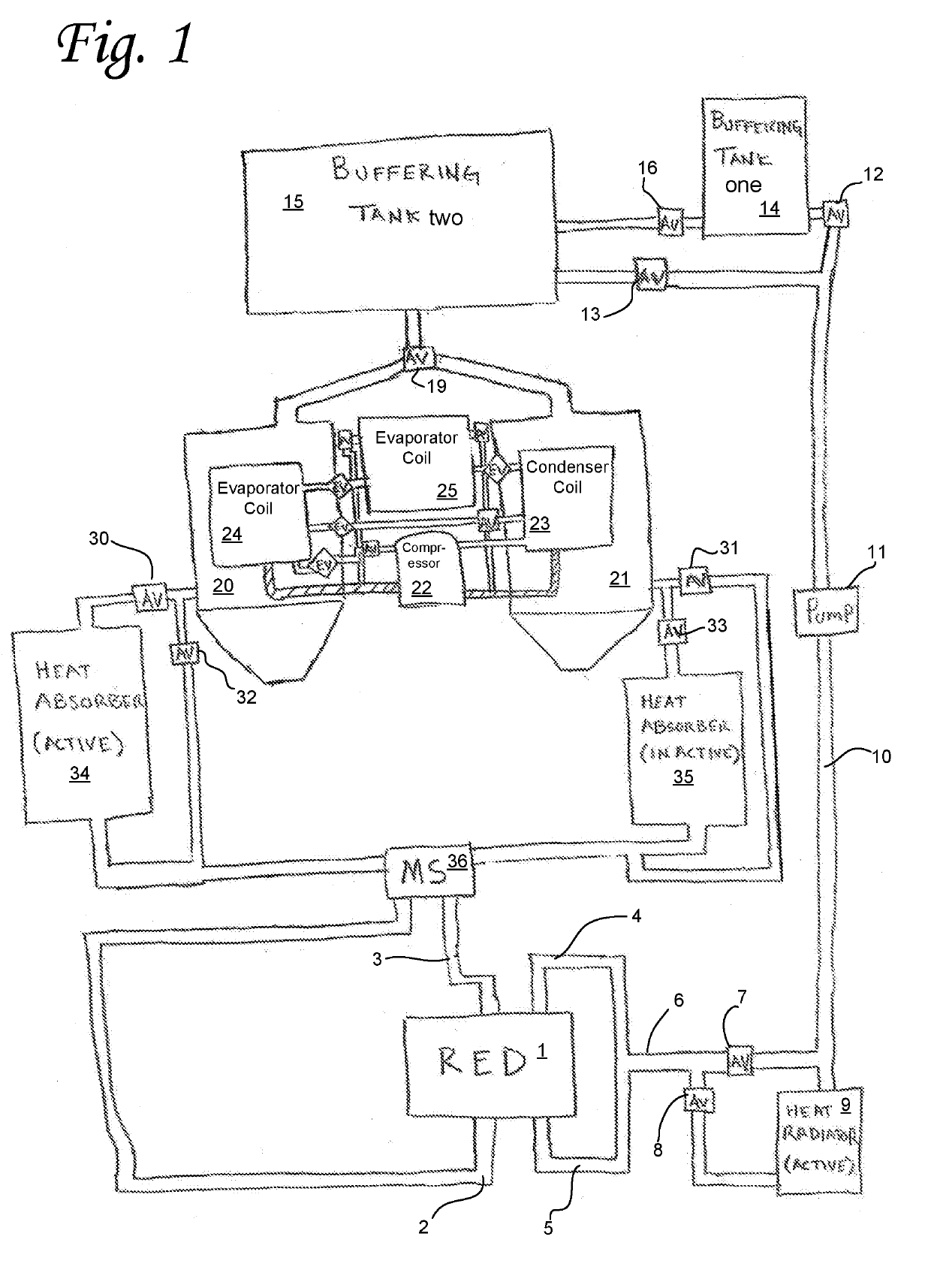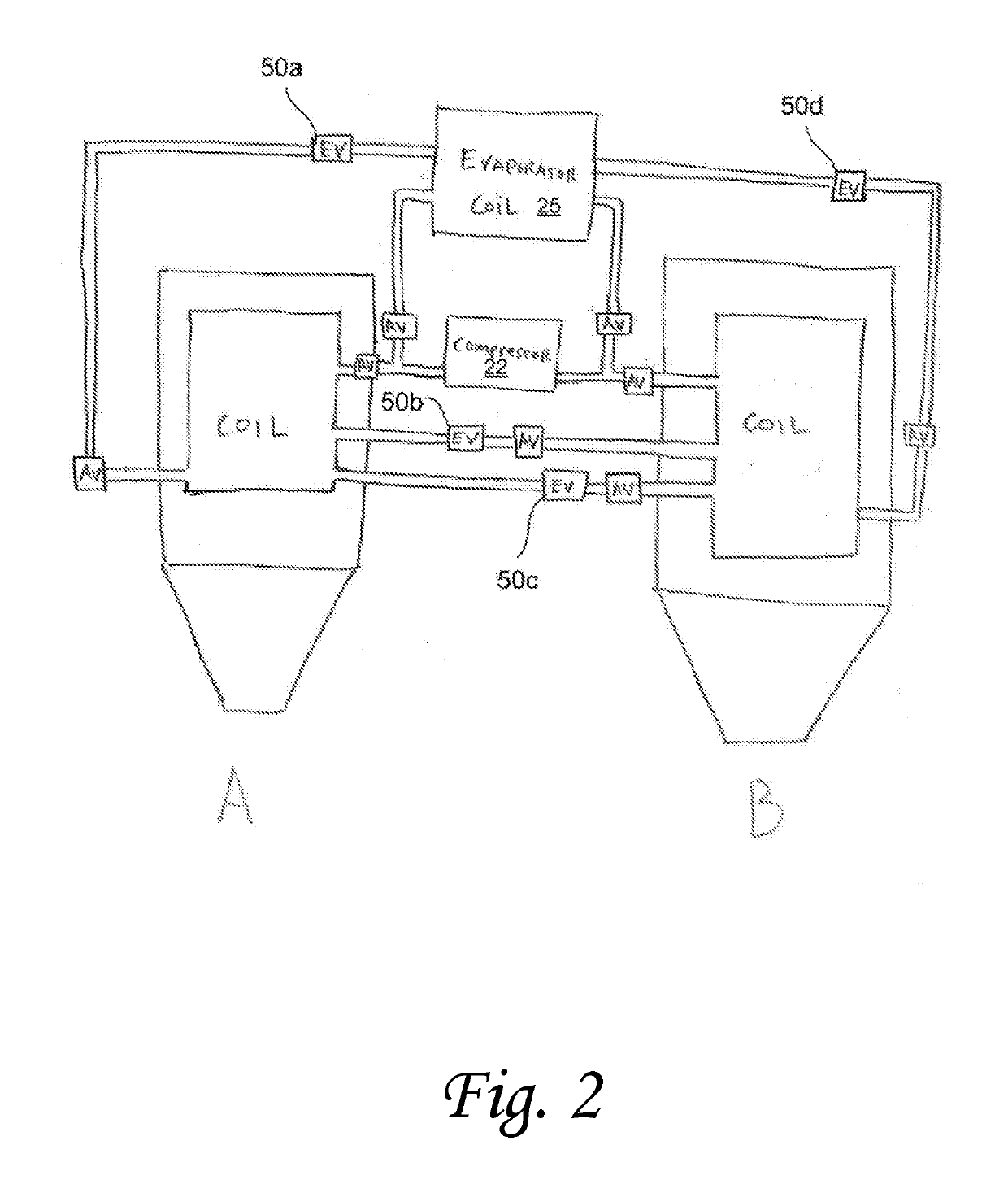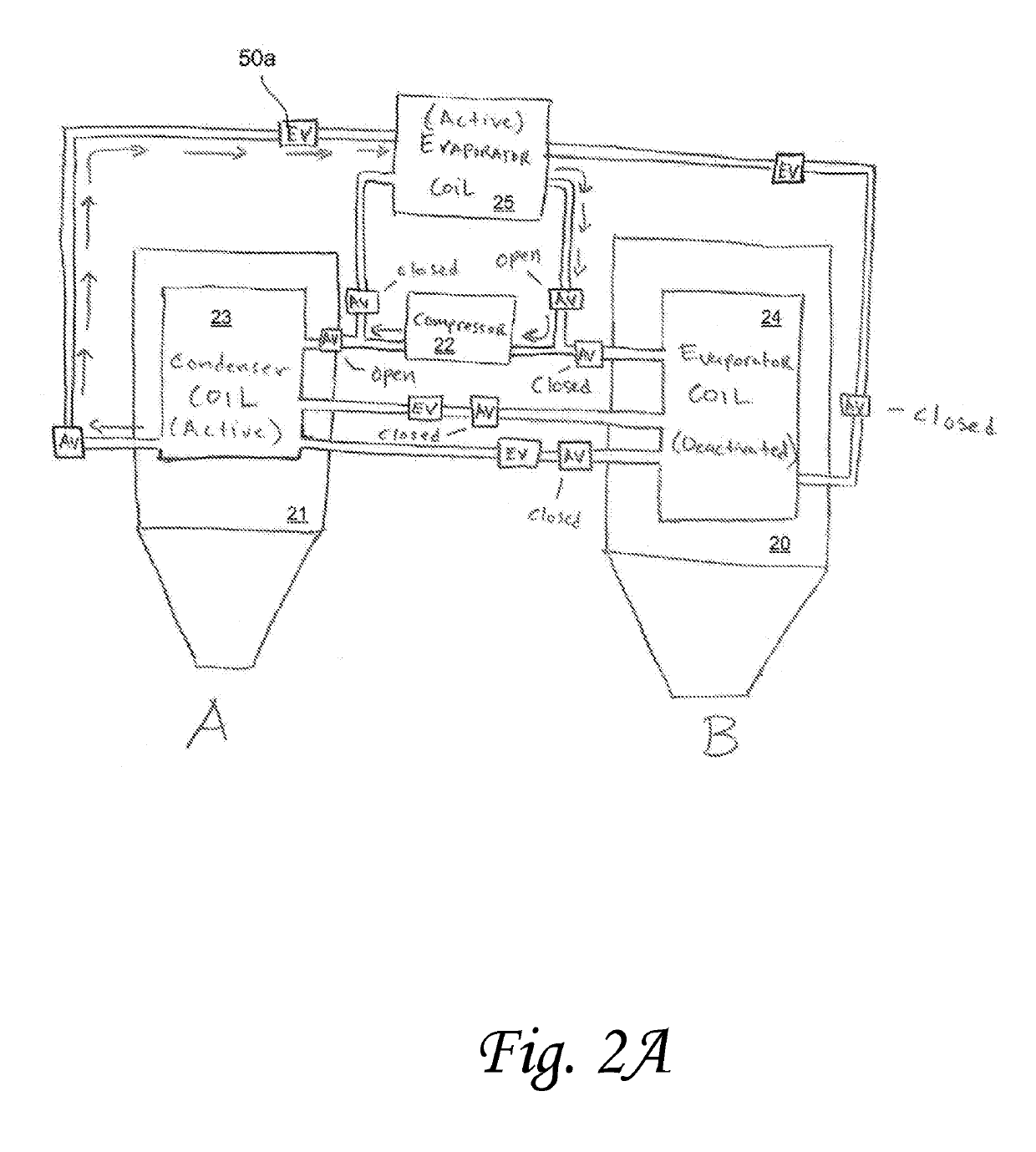Ionic Air Cooling Device
a cooling device and air technology, applied in heat pumps, heating types, separation processes, etc., can solve the problems of needing to discharge spent brine into the environment, reducing the efficiency of the red system's membrane, and fouling of the membrane, so as to reduce the preferred temperature range, prevent corrosion, and reduce the effect of efficiencies over the prior ar
- Summary
- Abstract
- Description
- Claims
- Application Information
AI Technical Summary
Benefits of technology
Problems solved by technology
Method used
Image
Examples
Embodiment Construction
[0008]An object of the present invention is to provide a method and apparatus using highly efficient means to generate air cooling.
[0009]Another object of the invention is to improve and extend the utility of the reversed-electro-dialysis processes, in addition to the pressure retarded osmosis process, according to the method and apparatus disclosed herein creating a highly efficient electrical output that has a very low carbon footprint—e.g. it is not reliant on consumption of fossil fuels, thus avoiding the production of greenhouse gas emissions. To the extent the invention disclosed herein causes net air cooling, its utility in the reduction of greenhouse gases could be especially useful.
[0010]A further object of this invention is to associate the disclosed method and apparatus with an industrial low grade heat source, such as the gasification of municipal solid waste, solar, or a gas stream input from for example a petroleum cracking facility, allowing the electrical voltage pot...
PUM
| Property | Measurement | Unit |
|---|---|---|
| temperature | aaaaa | aaaaa |
| temperature | aaaaa | aaaaa |
| temperature | aaaaa | aaaaa |
Abstract
Description
Claims
Application Information
 Login to View More
Login to View More - R&D
- Intellectual Property
- Life Sciences
- Materials
- Tech Scout
- Unparalleled Data Quality
- Higher Quality Content
- 60% Fewer Hallucinations
Browse by: Latest US Patents, China's latest patents, Technical Efficacy Thesaurus, Application Domain, Technology Topic, Popular Technical Reports.
© 2025 PatSnap. All rights reserved.Legal|Privacy policy|Modern Slavery Act Transparency Statement|Sitemap|About US| Contact US: help@patsnap.com



